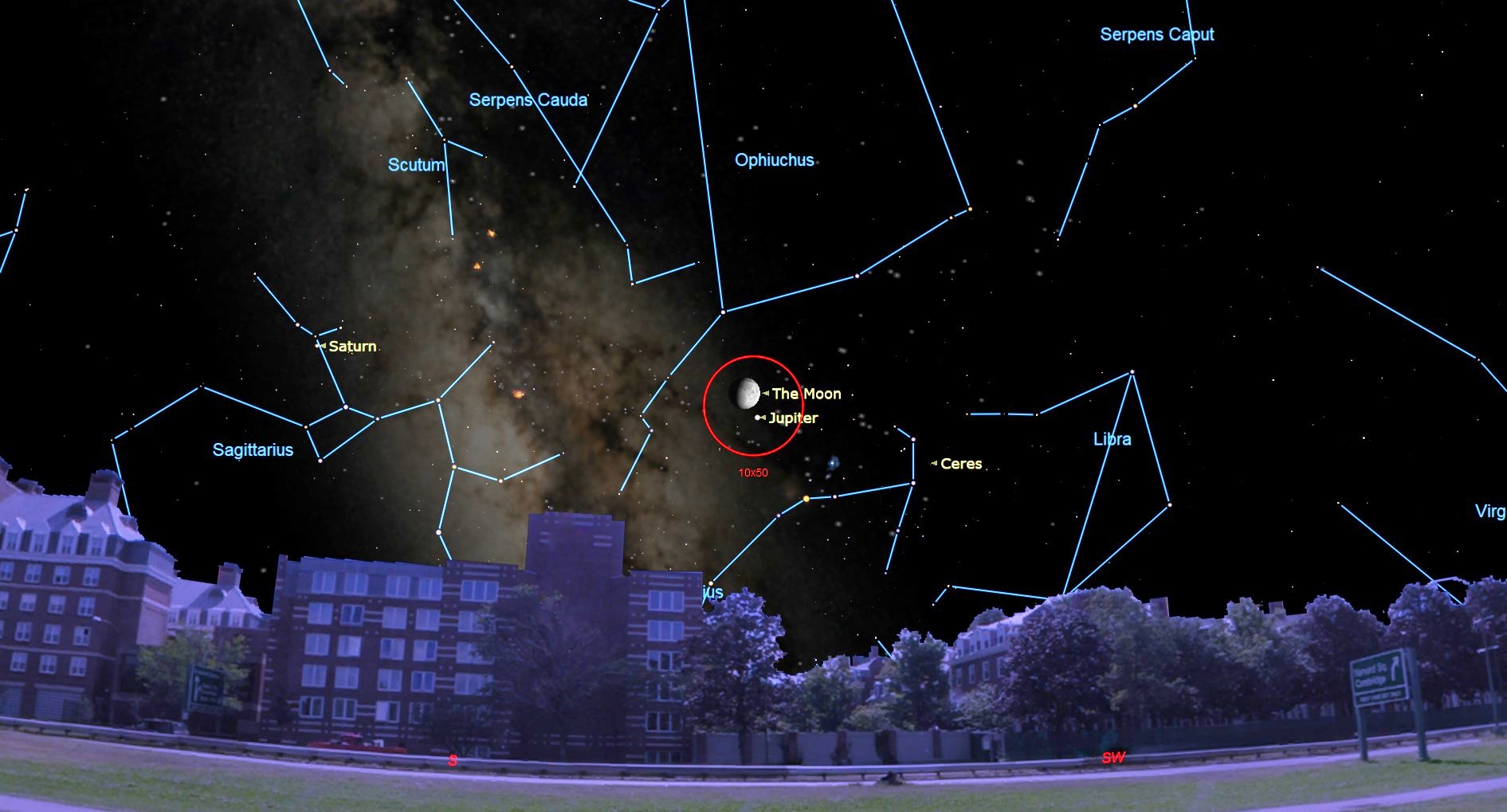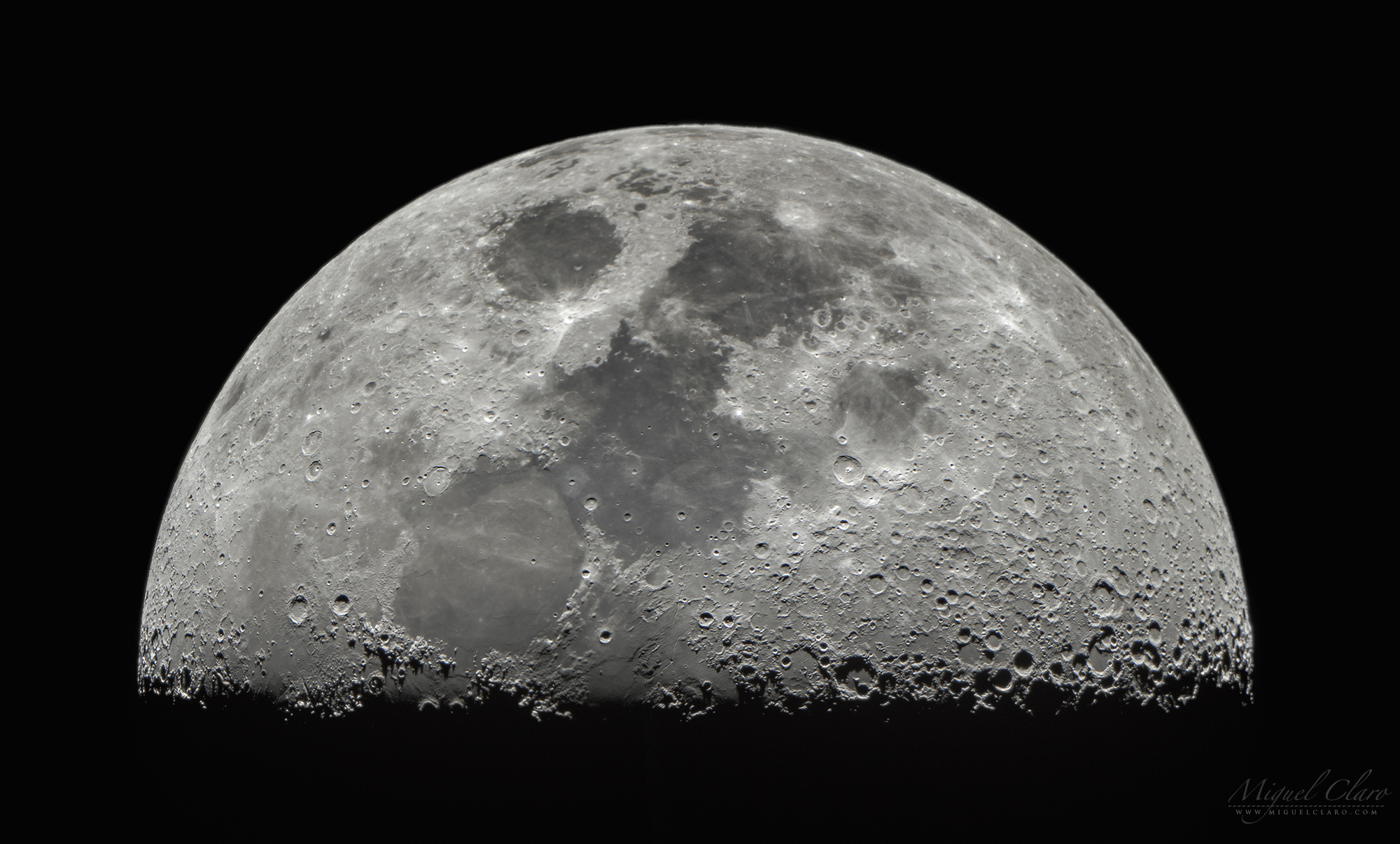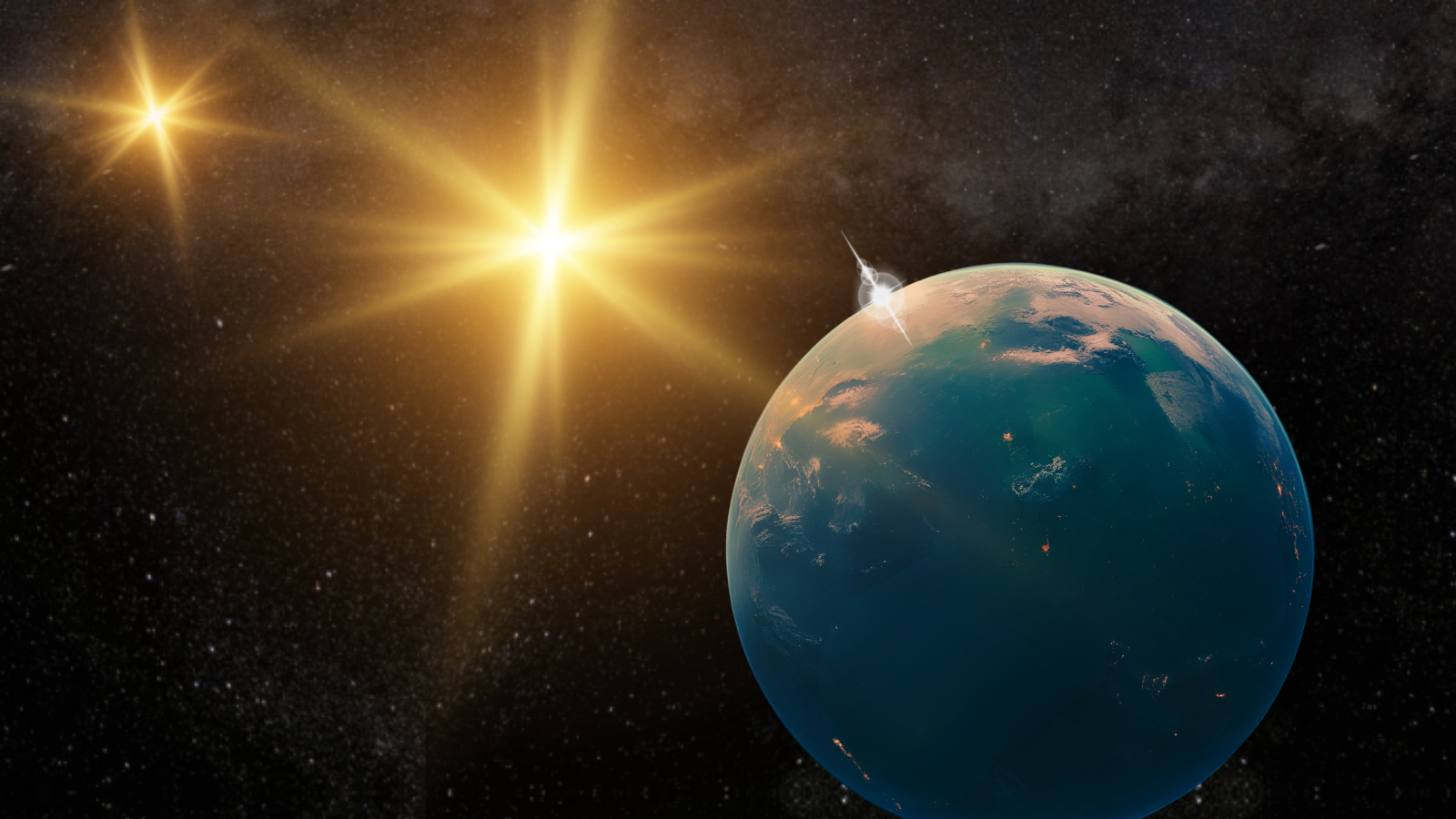See the Moon Near Jupiter (and Twinkly Red Antares, Too!) This Friday
On Friday evening, assuming your skies are reasonably clear, you'll be able to see the moon passing near to the largest planet in the solar system: Jupiter.
About 1 hour after the sun sets, the eye-catching celestial duo will be visible in the southern sky, about one-third up from the horizon to the point directly overhead (called the zenith). The moon, which will be just over two days past first-quarter phase — nearly 74% illuminated by the sun — will be to the upper left of Jupiter, a distance of about 2 degrees.
That's equal to about 3.5 times the apparent size of the moon, and that means you should be able to fit at least three full moons in the gap between them in Friday's evening sky. And yet when you see them in the sky, they'll be seemingly much closer together, because the moon appears bigger to the human eyes compared to what its one-half degree size would otherwise suggest.
Related: The Brightest Visible Planets in August's Night Sky: How to See them (and When)
In addition, don't overlook Antares, the brightest star in the constellation Scorpius, the Scorpion, sitting less than 7 degrees to the lower right of Jupiter. Antares shines only about 1/20 as bright as Jupiter, but sharply contrasts it both in color (Jupiter appears a silvery white, while Antares glows distinctly red) and how much it twinkles (Jupiter shines with a steady light, while Antares appears to twinkle).
A rugged landscape to explore
When the moon is at or just past first-quarter phase, we get the best views of the lunar landscape right along the sunrise-sunset line, or terminator. Around those times when the moon is half-lit, or in a gibbous phase, those features lying close to the terminator stand out in sharp, clear relief. Using a telescope with magnifications of 20- to 40-power, we can see a wealth of detail on its surface. Even binoculars will clearly show the rugged lunar terrain.
And on Friday night, we'll have a bonus of sorts, for the terminator will be passing over two prominent craters. Just to the left of the moon's center will appear the crater Copernicus, 58 miles (93 kilometers) wide, sometimes known as the "Monarch of the Moon." Meanwhile, down near the southern rim will be Clavius, the second-largest lunar crater at 144 miles (231 km) in diameter. Some folks with exceptional vision claim that they can glimpse Clavius with their naked eye. Why not try it for yourself?
Breaking space news, the latest updates on rocket launches, skywatching events and more!
Four moons for the price of one
In a telescope, Jupiter is also a prime attraction; best observed during early evening when it's still high and its image reasonably calm. And its four bright moons are always performing. They seem like small stars, though two of them are really larger than our own moon. It's indeed possible to watch them change their positions relative to each other from hour to hour and from night to night.
In fact, if you look at Jupiter with a small telescope or even steadily held binoculars on Friday evening, you'll see all four of those big satellites. On one side of Jupiter will be Europa, while on the other side you'll be able to see Io (closest to Jupiter), followed by Callisto and Ganymede.
And if you point out Jupiter relative to the moon on Friday to members of your family or to friends, be sure to tell them that what they are seeing is merely an illusion of perspective. The moon is our nearest neighbor in space, and on this night it will be situated 242,000 miles (389,300 km) away. Meanwhile, Jupiter is much farther away at 439 million miles (706 million km).
But on this night, they will be aligned as seen from our earthly perspective to make them appear as an eye-catching sight in our sky.
- See the Elusive Planet Mercury in the Dawn Sky This August
- Catch a Shooting Star with 2019's Summer Meteor Showers
- Moon and Jupiter Shine Among Trees in Stunning Photo
Joe Rao serves as an instructor and guest lecturer at New York's Hayden Planetarium. He writes about astronomy for Natural History magazine, the Farmers' Almanac and other publications, and he is also an on-camera meteorologist for Verizon FiOS1 News in New York's lower Hudson Valley. Follow us on Twitter @Spacedotcom and on Facebook.

Joe Rao is Space.com's skywatching columnist, as well as a veteran meteorologist and eclipse chaser who also serves as an instructor and guest lecturer at New York's Hayden Planetarium. He writes about astronomy for Natural History magazine, Sky & Telescope and other publications. Joe is an 8-time Emmy-nominated meteorologist who served the Putnam Valley region of New York for over 21 years. You can find him on Twitter and YouTube tracking lunar and solar eclipses, meteor showers and more. To find out Joe's latest project, visit him on Twitter.


